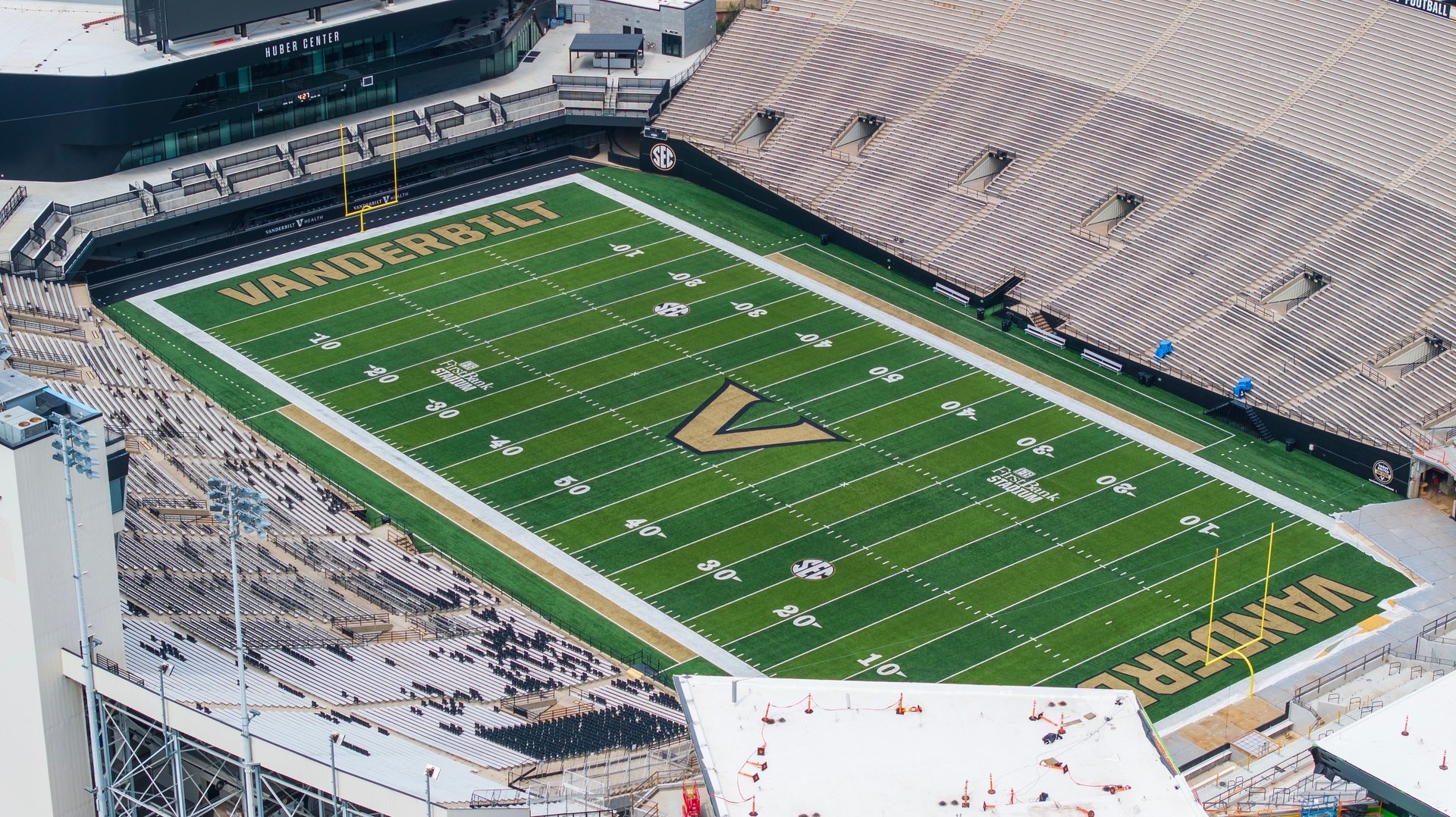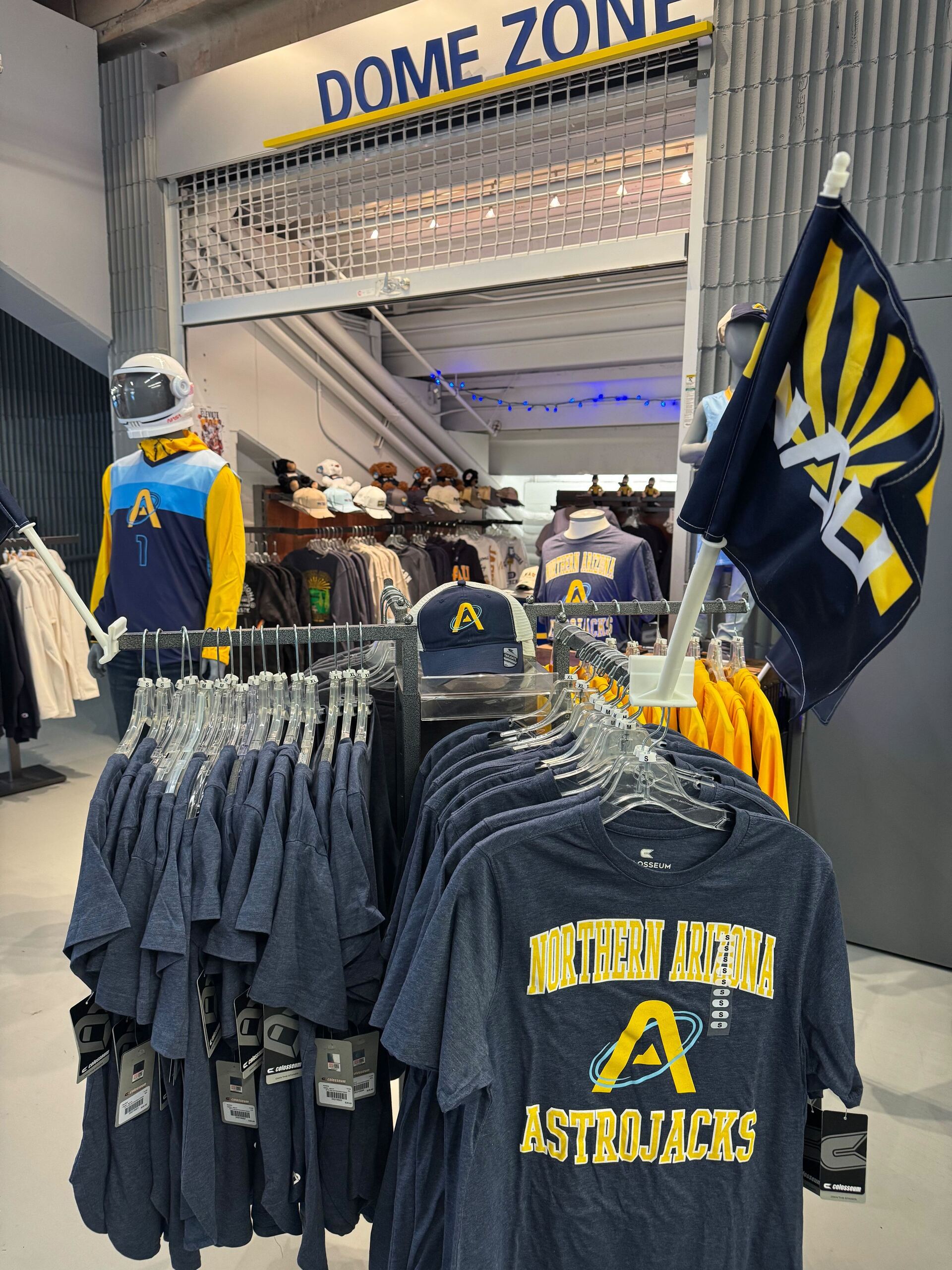Good morning, and thanks for spending part of your day with Extra Points.
Before we dig into today's mailbag, I have a few announcements to share.
First, normally, Extra Points publishes four days a week. This week, though, I'm just going to publish today. There will still be a Going For Two that will publish this week, but today will be the last newsletter until next Monday. Enjoy your Thanksgiving, and I'm sure we'll have plenty to talk about next week!
Second, I gave a mini-lecture about early college football history at the University of South Carolina last week. If you weren't able to make it, good news! They recorded the whole thing, and you can watch it here, if you'd like.
Third...ah, we'll get to all that stuff at the end. Let's take a few of your questions.
Reader Tim asks:
About C-USA: will the conference formally come out if they are not expanding and if they do expand, will it be by 1 or 3 schools and when?
Based on what I'm hearing and reading now, I think it is unlikely that Conference USA adds any additional teams this calendar year. In 2022? That might be a different story.
The thinking goes, early 2022 will bring additional clarity about what the new D-I bylaws and constitution will actually look like, including new information about reclassification and revenue distribution. Should it become clear that FCS teams potentially interested in moving to FBS need to do so right this very second or they will miss their chance, Conference USA could have a stronger candidate pool than they might if they added a team next week.
With nine teams, there's not a huge push to add another team just to add one. The league's next media deal isn't expected to be very lucrative, and adding a 10th team for no reason could just dilute that money even more. But, if in say, late April, a high potential FCS program became available, that could change the league's calculus.
I do not expect UConn or UMass to join Conference USA in 2022. I also have been told it's pretty unlikely for the league to add basketball-only affiliate members, such as UT-Arlington or UA Little Rock.
Hey, speaking of those two....
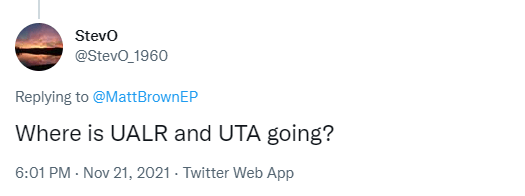
I'm hearing that the preferred destination for both programs is the Missouri Valley. However, the MVC is really only interested in UT-Arlington. I've been told that the Mavericks were at or near the top of the MVC wishlist for a while, as presidents from the league's private schools pushed for the MVC to expand into larger markets (not to maximize TV revenue so much as to improve student recruiting). Little Rock is not in that conversation.
I am hearing that if the MVC doesn't work out, the OVC is a more likely destination for UALR than the ASUN, WAC or Southland. One person close to the program told me that while he understands why fans bring up the ASUN, "that still gives us the same problems we had in the Sun Belt, just now with less money."
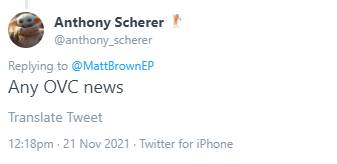
This has been a hard league for me to get my arms around, because information has changed quickly, and this is a conference that I think has to be a bit more reactive than others.
I was told that earlier in November, OVC officials were kicking the tires on a potential merger with the Southland, although I don't believe that is likely at this point. I know the league has also attracted quite a bit of interest from several D-II programs, enough interest to make me think the league isn't in danger of vanishing or anything.
But part of the reason you haven't seen anybody officially announce they're joining, is because there's still uncertainty about what kind of league this will be in six weeks. Murray State could very well follow Belmont to the Missouri Valley in the immediate future, and the ASUN may try again to lure some Tennessee schools.
In some ways, I think the OVC is in a somewhat similar situation to where Conference USA was a few weeks ago. Plenty of schools are interested, but nobody wants to commit to jumping ship (and potentially having to pay six or seven figures in exit fees) to join a league that say, might not sponsor football in two months...which could be what happens to the OVC.
I suspect we won't have final clarity about the OVC's future membership until we have a better idea what the Missouri Valley and A-10 do. Some leagues are in a position to be proactive, and others probably have to be more reactive.
Reader Chris asks:
Is Temple going to go to the A-10? Should they? Would football independence really be a dealbreaker if you could help restore the core hoops identity?
First, before this blows up on the message board circuit, let me say this. My current understanding is that the A-10 would love to have Temple, and that there are individuals associated with Temple basketball that would love for this to happen. I don't have any reason to think, right now, that this move is likely, or that Temple's senior administration is as interested in this move.
The tricky thing about the "is independence viable" type questions is that it really comes down to what you really want out of your football program.
If your school needs to win eight games a season and sell 30,000 tickets a home game in order for your football program to reach your institutional goals, well, no, I don't think independence is viable, even if it's better for your basketball program.
If you measure success by something other than wins or losses, and you have the stakeholder support, then sure, you can do it. I think UConn can be independent in football for a while. So can UMass. Temple could do it too, so long as everybody involved realizes that being an annual bowl team is essentially impossible under those circumstances.
I don't know enough about Temple's institutional priorities to know if going indie is really possible. I think all I can really say is that the conference they're in now simply isn't the conference they joined a decade ago.
Also, I got a gazillion other questions about low-major leagues, and I think this answer might address some of them. Allow me to propose Brown's Theory of Conference Realignment, which I think can provide a framework to evaluate what any particular league will or won't do.
Brown's Theory states that if shared conference institutional identity decreases at a rate faster than conference revenues increase, the chances for conference instability increase. The greater the disparity between the two variables, the greater the risk of membership change.
Basically, I'm saying that schools want to be in leagues with their peers. That shared identity could be geographic, financial, historical, institutional, or likely, some combination of all of the above. Schools are willing to affiliate in leagues without that shared identity, if they feel like they don't have a choice, or if they think they'll make a lot more money/prestige.
So if you're looking around the college sports landscape, and you're wondering if a certain school or league may change membership, try applying Brown's Theory...or go back in college sports history. You'll be surprised how often that holds up.
To any of the graduate students reading this....I just gave you a research topic. YOU'RE WELCOME.
Okay, let's pivot away from realignment here for a second:
Reader Billy asks:
This is probably an absurd question but when do we hit critical mass on coaching salaries. It seems we're only a matter of time until we have programs that are not real playoff contenders spending 8-10 million on a head coach
I don't think this is an absurd question. If anything, it's a reasonable one, given that we're heading into a coaching cycle where it feels like a given that a coach who is nowhere near the 4-5 most accomplished in his profession will sign a deal for more than $7 million a year. Coaches are going to make that kind of money to go to the Texas Bowl. This is categorically insane, and honestly, ADs, and even some coaches and agents, will agree, although none of them can, or will, stop it.
I think only two things can meaningfully slow the cost growth. One, of course, would be for college football players to get paid. I know some schools and analysts worried that enough boosters or brands would redirect money from athletic departments to athletes via NIL, drying up revenue that could have been used on coaches (or other projects), but I don't think there's real evidence of this happening at the 100-day mark, and I'm skeptical it ever does. I think the only way the marketplace is impacted enough to actually force coaching salaries down would be if players became actual employees, and were paid a direct salary. This could potentially happen in the near future.
The other thing, and honestly, this might also have to happen, would be for there to be significant enough changes in the tax code to where we didn't have as many individuals who could write a seven figure check to cover a buyout. If making those sorts of contributions set off some sort of tax liability, I don't know if quite as many boosters would be excited to do it.
Short of that, I don't think anybody can rely on the ol' invisible hand of the market to course correct. That hand is not paying attention. College football does not work the way you were taught markets work back in Econ 103.
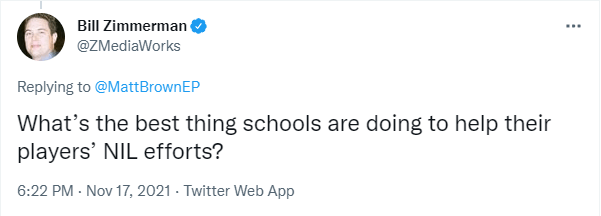
This is a great question.
Honestly, I think the bar here is pretty low. There are still a ton of college athletes who don't meaningfully know what they should be doing to find a $250 NIL deal (which I believe is obtainable by every single D-I athlete). I know many mid and low-majors have told me they simply do not feel they have the operational capacity to help athletes with this right now.
The smartest moves I've seen haven't been the flashiest. Schools that are bringing their businesses schools and campus subject-matter experts to their athletic departments are doing their athletes a real service. I've seen a few schools build relationships with local Chambers of Commerce, which I think is very smart. More and more are embracing group licensing, which is an easy way to get money into the pockets of athletes as well.
For all the talk of NIL being transformational, honestly, I don't think things have changed that much for the typical D-I athlete. I'm hopeful everybody will be better at serving these needs by next school year.
We'll get out of here on this one.
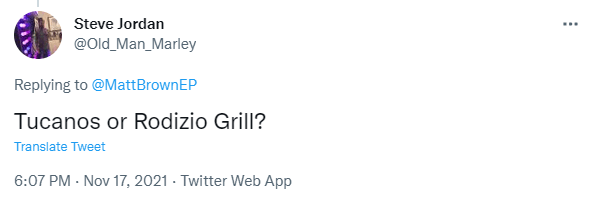
I can't say I've ever had a bad meal at a Brazilian steakhouse that serves meat on swords. But friends, let me just sing the praises of all Brazilian food. You do not need to spend fifty bucks and eat enough sword meat to make your sweat smell like ribs for two days.
If you are not blessed to have a Brazilian restaurant in your town, feel free to experiment and cook some yourself. I'm partial to Moqueca de Camaroes, which doesn't require anything especially fancy, or the Pastel, which might be my single most favorite food in the universe.
Maybe when conference realignment slows down, I'll share a recipe or two.
This Extra Points newsletter is brought to you by immi.

immi reinvents the delicious Asian-American foods we love with added nutrition. We’ve started by enriching the comforting, umami-rich, and nostalgic bowl of instant ramen. immi offers delicious ramen with more protein, lower sodium and better quality-ingredients than what you've probably got in your pantry, all without breaking the bank.
Extra Points can try immi today and get free shipping off their six-pack. Upgrade your ramen game today with immi.
This Extra Points newsletter is also brought to you by The Daily Upside.
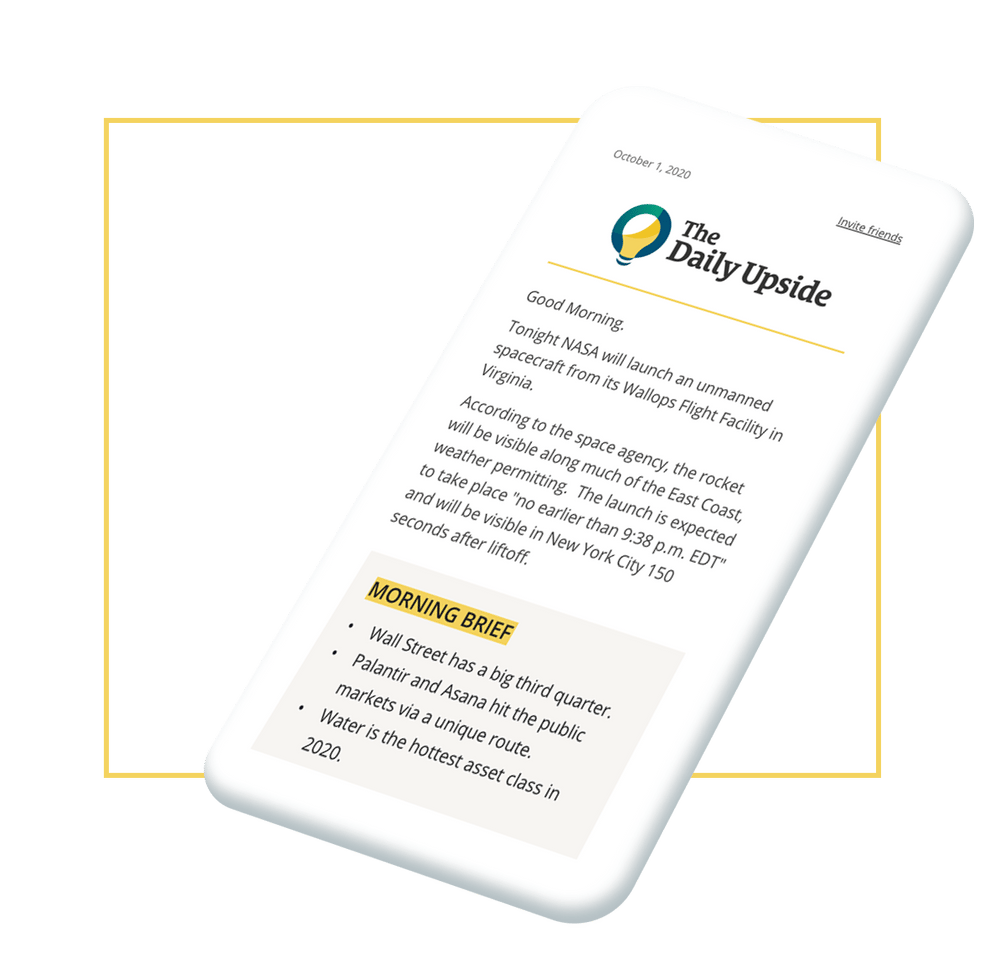
Traditional investment news is littered with jargon and filled with fluff, which makes it hard for even professionals to understasnd. The Daily Upside peels out the insights and translates them into plain English.
You can subscribe for free right here, and get The Daily Upside sent your inbox.
This is an ad, and Extra Points does earn a commission for every free subscription generated by this ad.
To sponsor a future Extra Points newsletter, please email [email protected]. For article ideas, newsletter feedback, FOIA tips, athlete NIL sponsorships and more, I'm at [email protected], or @MattBrownEP on Twitter.




